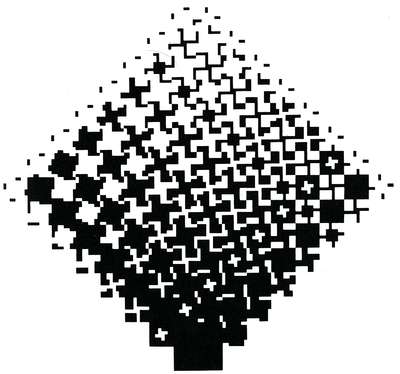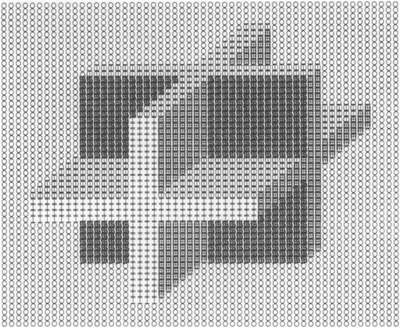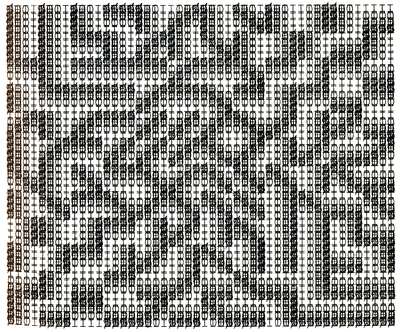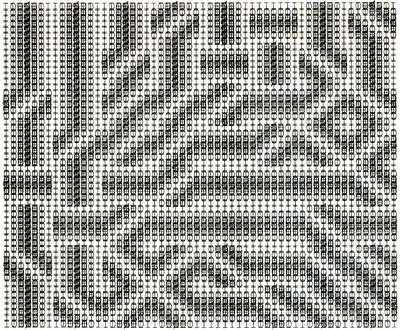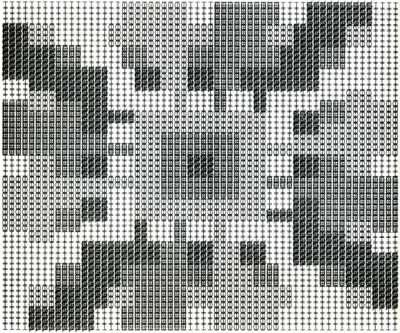Basset ‘s art has travelled through painting in a socially committed, realistic manner in the late 1940’s to constructive cardboard sculpture, kinetic interference objects, and construction kits and game-boards which viewers could remodel themselves in the late 1950’s.
By 1962, he developed a permutation principle, according to which drawings were produced on a raster base. The raster pictures were initially realised personally, by hand, but a typewriter took over the work in 1969. By the early 70’s Basset was a member of the groups Wege zur Computerkunst and the gruppe parallel .
He began collaborating with Willi Plochl (a computer engineer, working at IBM labs Vienna) sine 1975 to produce computer-generated raster graphics. Plochl developed the programme GRAF 1 for Basset which was used to produce Raster Graphics on an IBM System/32.
Referring to his artistic debate with the computer, Basset maintains: “It has now become not only appealing, but positively indispensable for me to continue my work with the computer. My first experiences have indicated that this machine does not compel the artist’s creative work to follow pre-ordained paths, but that – on the contrary – it is exhilarating and challenging. Methodically, adapting the creative process to the possibilities of the apparatus has brought me […] a remarkable step forwards.” (Quoted from Franke 1984, p. 48) 5


